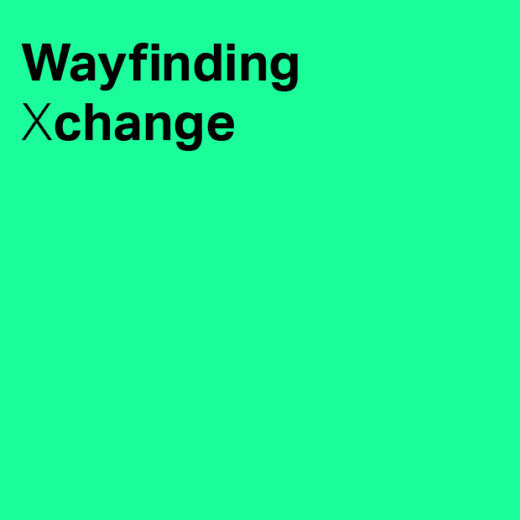Artist or designer?
Labels need to be fluid, but they also need to be relatable – creatively and professionally – so that other people understand who you are and what you do.
For most of Jason’s commissioners and clients, he’s an artist leading a studio that creates work. However, he uses design to develop, experiment, and realise work. Unlike the design world, he doesn’t start with a functional brief. It’s much more experimental and intangible.
Jason’s first to admit that what his studio produces couldn’t happen without design, engineering, and science. They don’t create products, their artwork creates atmosphere around a place. Interestingly, many of their recent commissions are connected with master planning for wayfinding.
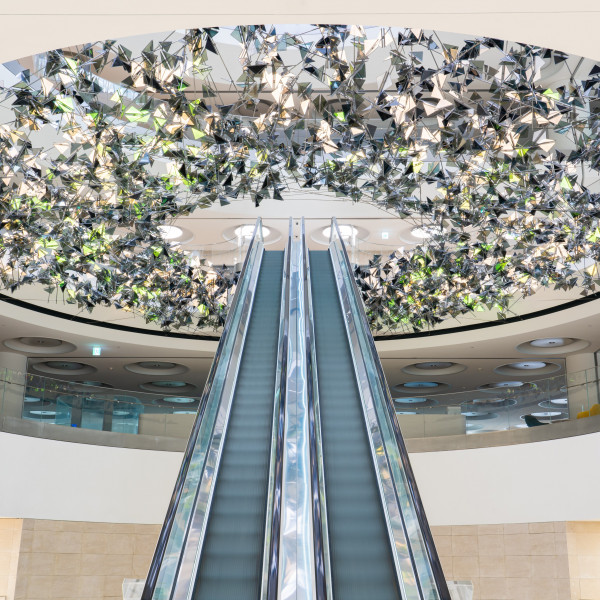
From artist to architect and back again
Jason comes from an artistic family. His mother was a trained artist. At school, he was always building, sketching, and making things. But for Jason, it was more of a hobby. He equally loved science. His father was a computer scientist – a software engineer – so science and engineering also surrounded him.
His favourite subjects at school were physics and pure and applied mathematics. But he was equally at home in the workshop as he was in the physics lab. For that reason, architecture seemed to be the logical place to be. He viewed it as technical applied art that fulfilled his interests.
Studying architecture at Oxford Brookes University, Jason was encouraged to create experiential installations, and one-to-one performance spaces. After graduation, he joined Norman Foster in Hong Kong, working on the terminals for the then-new airport.
After that experience, he returned to the UK and The Bartlett at UCL under Peter Cook, who was highly experimental and had a fascinating vision of architecture. It was all about performance, behaviour, and emotion. Buildings were not some frozen thing. They were very much alive. Whilst there, he taught and advised on an MA covering interactive and performative architecture.
That seeded Jason’s interest in environments that change based on the things that are happening around them. He developed a strong preference for performative, interactive, and dynamic work that entertained and provoked, something that created wonder, and became a catalyst for conversation: site-specific and contextual.
Jason continued working with Norman Foster in London, and to this day it’s an ongoing relationship. Later, he began working with Imagination, going deeper into experiential brand design. The theatricality of how to pitch and create work spun him off in another direction, taking him back to his studies and providing an outlet for his interest in performative architecture.
It was now the early 2000s, and an increasing number of projects were in the public realm. Work that was starting to incorporate light and sound in the form of multimedia environments. Within three years, he was starting to get work commissioned.
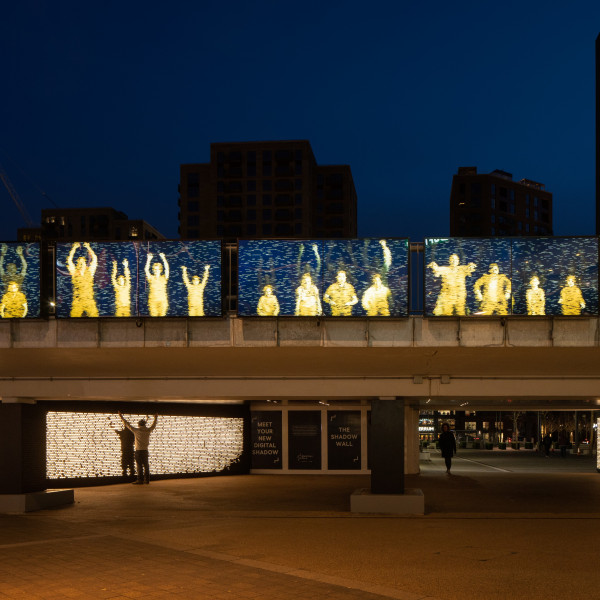
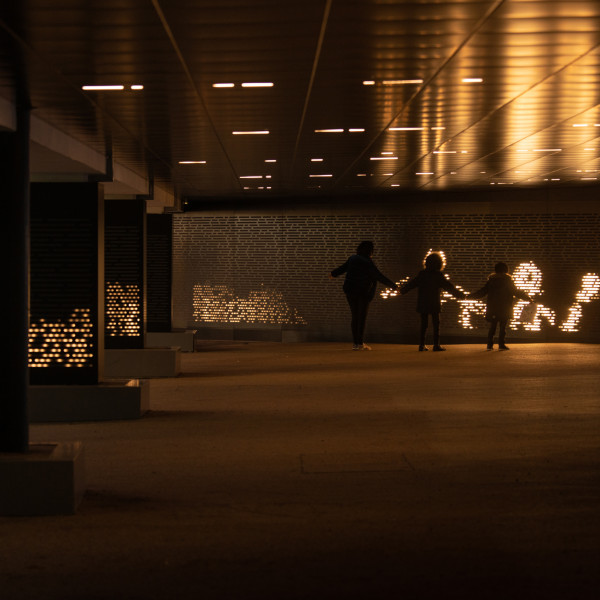
Bringing artwork out of the galleries
Using his scientific and engineering background, Jason was able to persuade people that this kind of artwork was not only exciting but feasible. That’s when he set up Jason Bruges Studio.
Early projects included Litmus (2005), a landmark public art project located along the A13 in Havering, and the Memory Wall (2005) – one of the world’s first video-controlled interiors – for the Hotel Puerta America in Madrid. A few years later, Jason Bruges Studio successfully pitched artwork for the new Olympic Park at Stratford.
Jason Bruges’ work is categorised by a number of features that crop up again and again: site-specificity atmosphere, climate, socio-economics, history, vistas, sight lines, composition of space – as well as all more typical architectural components. It’s considered: how does a piece of work sit here in this space? There’s a certain level of critique that pays respect to context.
The canvas is the constructed environment. There’s an element of applied technology – sound, light, haptics, robotics, and performative systems – which are all very much about exploring and approximating the living. There are elements of performance, magic, and suspension of disbelief too around something that’s animated, reactive, and interactive.
Despite all these ingredients, Jason has a minimalist approach, stripping things back to the bare bones. He takes inspiration from natural forms and colour changers, from chameleons and squids to a bird’s plumage and clouds in the sky.
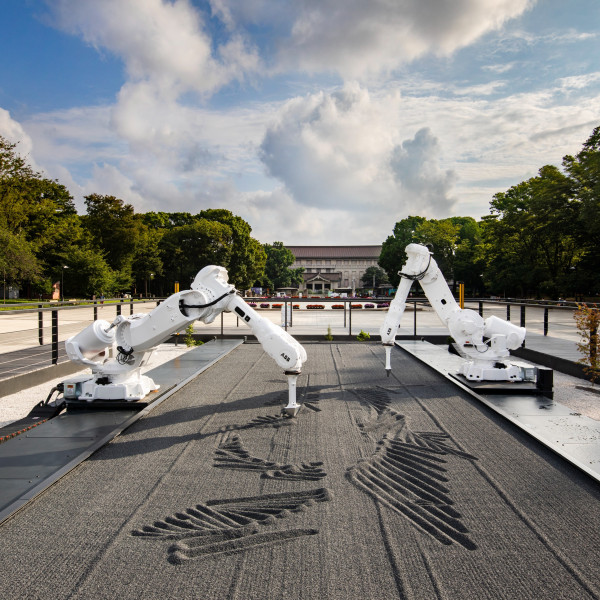
The culture of Jason Bruges Studio
Established for over 20 years, Jason Bruges Studio has a diverse, multidisciplinary team of over 25 employees from all walks of life. There are two main camps: people with a creative and curious approach to developing work and ideas, presenting those ideas, and driving them forward; and people with the technological know-how to make things happen, and bring ideas to life.
Right now, research and experimentation are driven by commission-based projects. Jason and his team do first-in-class research into software, materials, composites, systems, and algorithms. But Jason sees a future where there’s room for independent research and education. He’s recently collaborated with Google DeepMind and is fascinated by the potential of AI.
When it comes to creating artwork, certain aspects of testing, production, and fabrication are outsourced to experts. But the ‘brain’ behind any artwork always resides within the studio. This includes components such as hardware, software, generative animations, and algorithms. Jason compares it with a painter maintaining final responsibility for where the paint gets put.
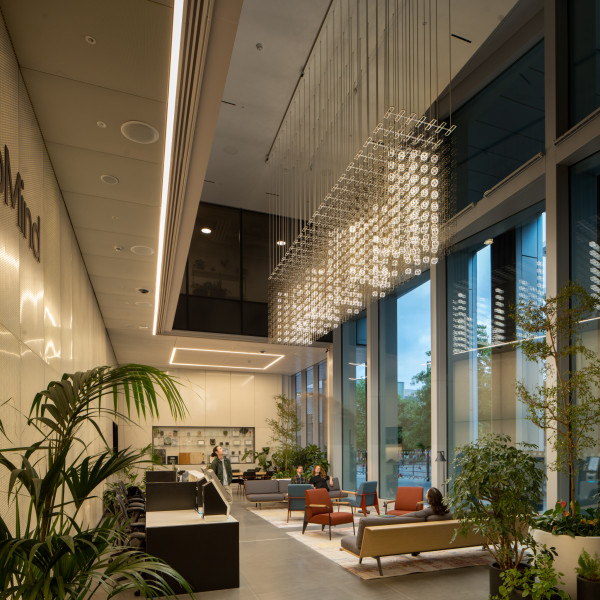
How commissions are costed
Sometimes clients approach Jason with a budget in mind. There are even quantity surveyors out there who are able to put together an approximate costing for media artwork. Often it’s a case of putting forward ideas and moving forward on a stage-by-stage basis.
By and large, price is split between the research, design, and development of an idea and the production, fabrication, assembly, and installation – and the after care. Commissioners usually know how it works and what happens if it breaks.
Jason Bruges Studio creates artworks to have longevity – between 10 and 50 years – even those with digital components and modules. This is leading to recommissioning as people see the value of keeping artwork going, and its contribution to a public space.
Considerations around sustainability
Sustainability was a part of Jason’s early education in architecture. For example, the number of solar panels needed, the reuse of greywater, and the feasibility of heat pumps. Back then, it felt like an important future consideration. And sure enough, sustainability is an important part of today’s agenda.
Jason Bruges Studio has worked with charities such as Greenpeace, World Wildlife Fund, and Thames21. One important aspect of their artwork is a reverence for the natural environment, making people engage with it, and think about it – through biophilia and biomimicry. Currently, they’re working towards Corp B certification.
Discover more about Jason’s work at www.jasonbruges.com
Our podcast is available on Spotify, Apple Podcast and YouTube. Don't forget to subscribe and rate us!

